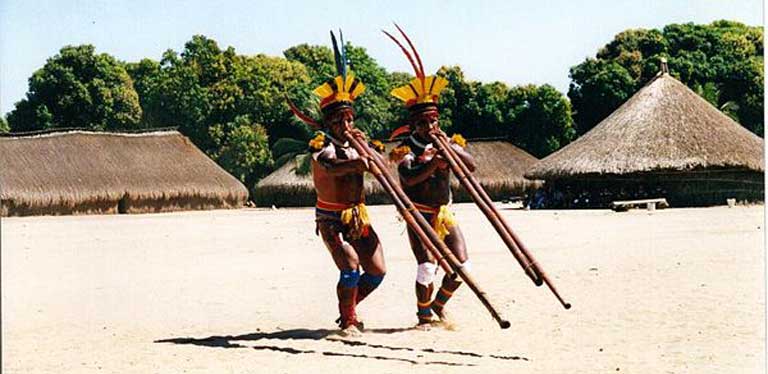By Sue Branford / Mongabay
Featured image courtesy of Wikipedia under the terms of the GNU Free Documentation License, Version 1.2
- Brazil’s Federal Public Ministry (MPF) has found the Brazilian federal government and the Norte Energia company guilty of ethnocide for the social and cultural destruction wrought on seven indigenous groups during the Belo Monte dam’s construction.
- The MPF is demanding the courts set up an external commission to prevent future harm, even as the Brazilian government is granted an operational licence for the dam, whose reservoirs are now filling.
- The MPF report states: “What is happening with the Belo Monte dam is a process of ethnic extermination by which the federal government is continuing with the colonial practice of integrating Indians into the hegemonic society."
Brazil’s Public Federal Ministry (Ministério Público Federal, MPF), an independent state body, has started legal proceedings to have it recognised that the crime of “ethnocide” was committed on seven indigenous groups due to the severe detrimental impacts on their lives made by the building of the giant Belo Monte hydroelectric power station that will soon begin operating on the Xingu River in eastern Amazonia. The charges have been made against Brazil’s federal government and Norte Energia, the contractor that built the dam.
After carrying out a lengthy study that fills 50 books and includes contributions from a wide range of experts, the MPF has concluded that the “social organization, customs, languages and traditions” of the indigenous groups have been destroyed by the construction of the dam.
One of the actions undertaken by Norte Energia about which the MPF is most critical was a plan called “Plano Emergencial”. Under this plan the company set up a distribution center in Altamira, a town that has experienced explosive growth recently as a result of the dam’s construction. Goods and foodstuffs were available here each month for every indigenous village but the Indians had to travel to the town to pick them up. The money for the center came from a budget line for “ethno-development”, which was set up to help the villages become sustainable in food and to develop viable economic activities.
Indians, some of whom had never been to Altamira before, had to stop planting and fishing in order to travel to the town each month. The journey could take days and the whole procedure was very damaging to indigenous culture. The MPF says: “The villages became covered in garbage, with a proliferation of disease as a result, illnesses such as high blood pressure, obesity and diabetes became common because of the change in diet, child mortality surged, along with alcoholism, drug consumption and prostitution."

The Belo Monte dam was completed at the cost of ethnocide to seven Amazon indigenous groups, according to the MPF. Photo by Pascalg622 licensed under under the terms of the GNU Free Documentation License, Version 1.2
At the same time Norte Energia began to build cheap houses in villages higher up the Xingu River, without taking into account indigenous culture. “Dozens of houses were built — wooden shacks with fiber cement roofs, like those in urban shanty-towns — with no consultation with Funai [the Indian Agency] or Ibama [the Environmental Agency]”. The building work itself was very harmful: unskilled workers without proper authorization entered the villages, disrupting village life and leaving construction waste behind; timber was illegally felled; a 17-year-old indigenous girl became pregnant from a construction worker.
Partially republished with permission of Mongabay. Read the full article, Brazil’s government charged with ethnocide in building of Amazon dam
